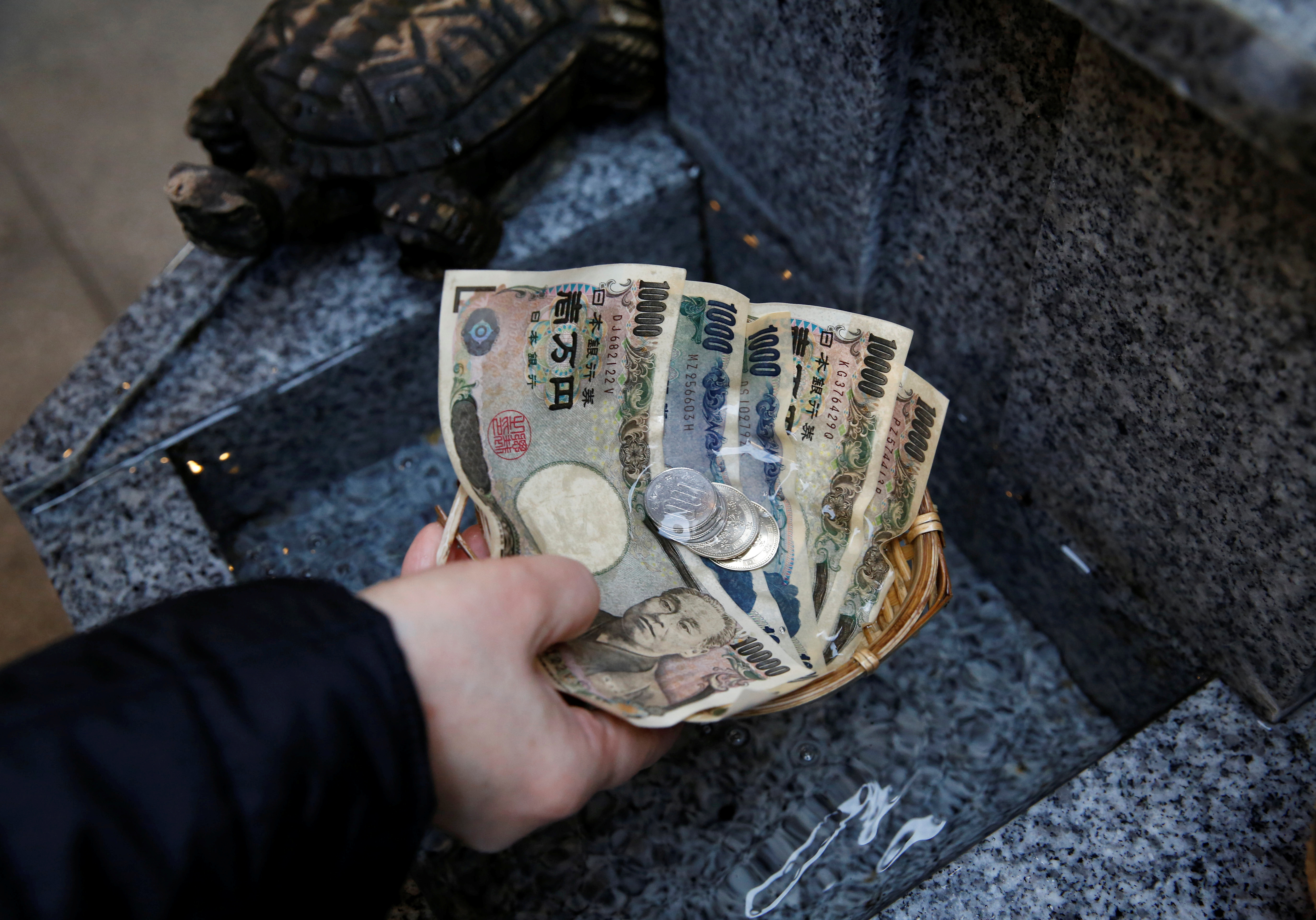A visitor washes Japanese yen banknotes and coins in water to pray for prosperity at Koami shrine in Tokyo's Nihonbashi business district, Japan, Nove

A visitor washes Japanese yen banknotes and coins in water to pray for prosperity at Koami shrine in Tokyo’s Nihonbashi business district, Japan, November 13, 2017. REUTERS/Toru Hanai Acquire Licensing Rights
HONG KONG, Dec 1 (Reuters Breakingviews) – Foreign exchange investors have been enjoying a quiet, rich life. Predictable monetary policies have made it easy to borrow yen and invest it in U.S. dollar assets and those of other countries where interest rates are high. But as central banks start moving in the opposite direction, those “carry trades” will become a lot riskier.
In recent decades, Japan has been a graveyard for investors looking for domestic returns. Notably those who bet against its government bonds in a trade so bad it became known as the “widow maker”. Foreign exchange traders beg to differ: the carry trade has been a sure-fire money maker this year. That’s due to the huge gap in short-term interest rates between Japan, where they are -0.1%, and other countries.

The most popular carry trade with yen has been into U.S. dollars . That’s because the Federal Reserve has pushed the benchmark federal funds rate to 5.25% to 5.5% – the highest level in 17 years – to slay inflation. More daring investors have placed their borrowed yen in emerging markets such as Colombia, where rates are 13.25%, Mexico, where borrowing costs are 11.25%, or Brazil, where the overnight rate is 12.15%.
These bets can be risky. Big spikes in either of the currencies involved can wipe away returns or, worse, force investors into early repayment of the money they borrowed. But the foreign exchange waters have been unusually calm. A Deutsche Bank index of options’ volatility – a gauge of markets’ choppiness – touched the lowest point since February 2022 last week.
The key reason is that the inflationary spike that followed the pandemic – and worsened after Russia’s invasion of Ukraine in 2022 – made for very predictable monetary policy: all major central banks raised rates. Japan is musing on moving in that direction but remains an outlier, sticking to ultra-low rates to stimulate its stagnant economy.
That’s about to change. Markets expect the Fed to cut rates at least twice next year, according to derivatives pricing collected by LSEG. Those expectations have already sent an index that tracks the dollar against a basket of foreign currencies to its lowest level in more than two months on November 20. As for Japan, 43% of the fund managers polled by Bank of America in November think the central bank will increase rates in the first quarter of 2024.
As markets become choppier, new waves of volatility will drown out carry trades.
Follow @guerreraf72 on X
CONTEXT NEWS
The U.S. dollar touched the lowest level against other major currencies in nearly three months on Nov. 20 on expectations the Federal Reserve won’t hike rates further.
The dollar index, which measures the value of the greenback against a basket of foreign currencies, fell to 103.4 on Nov. 20, the lowest level since the end of August.
Editing by Una Galani and Thomas Shum
Our Standards: The Thomson Reuters Trust Principles.
Opinions expressed are those of the author. They do not reflect the views of Reuters News, which, under the Trust Principles, is committed to integrity, independence, and freedom from bias.
www.reuters.com

COMMENTS